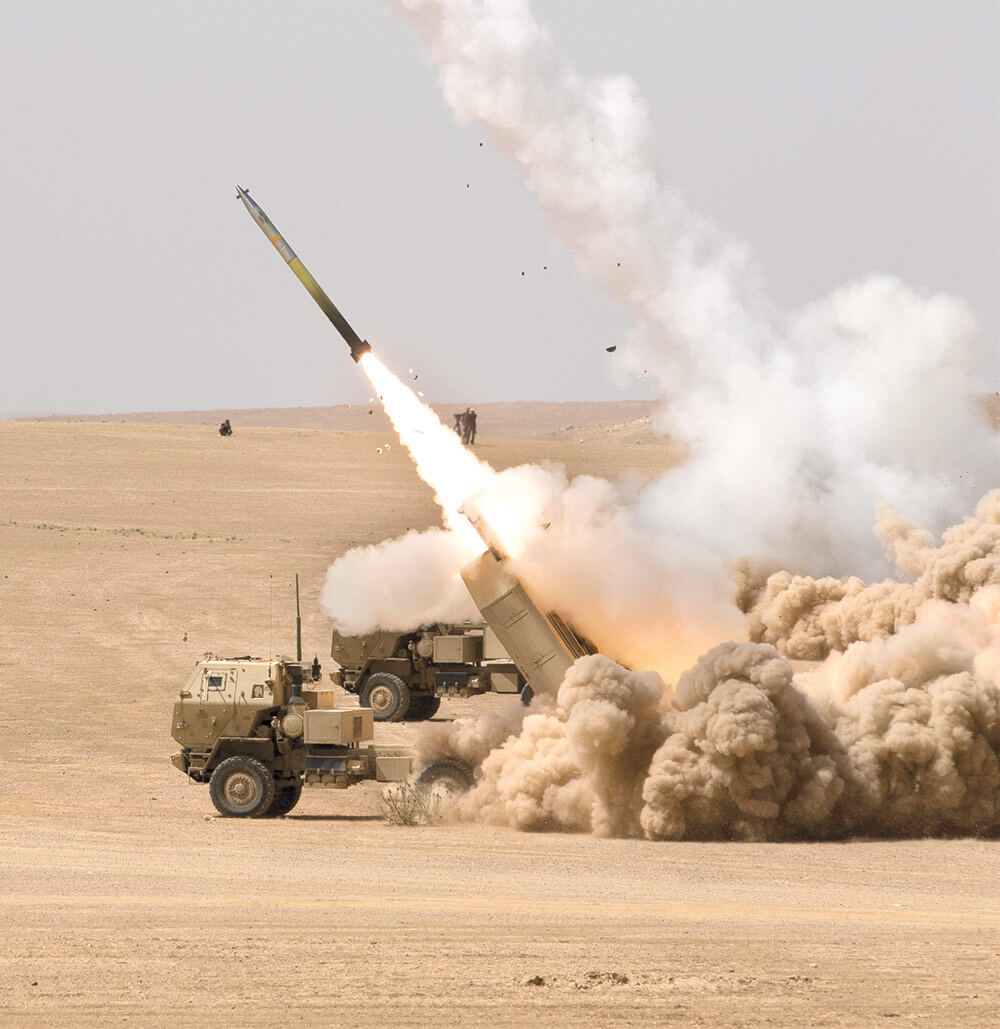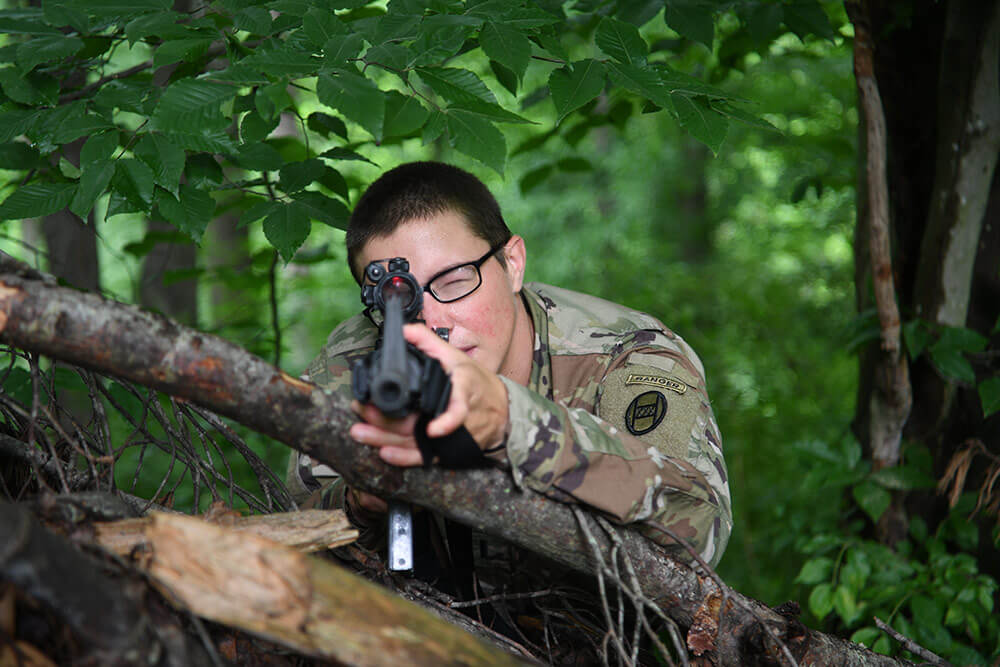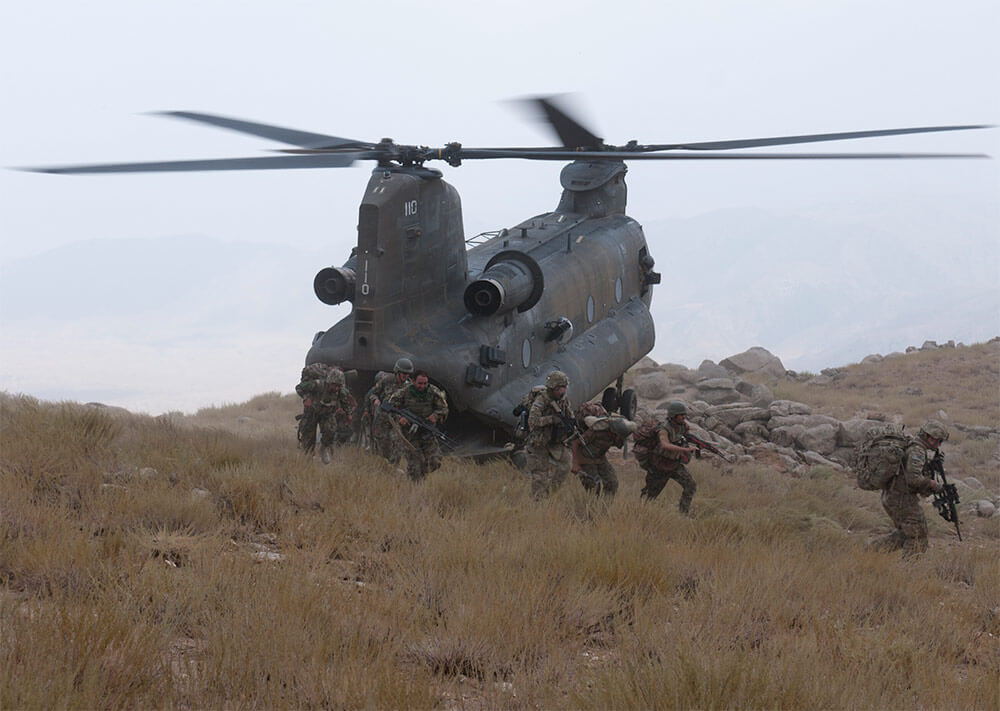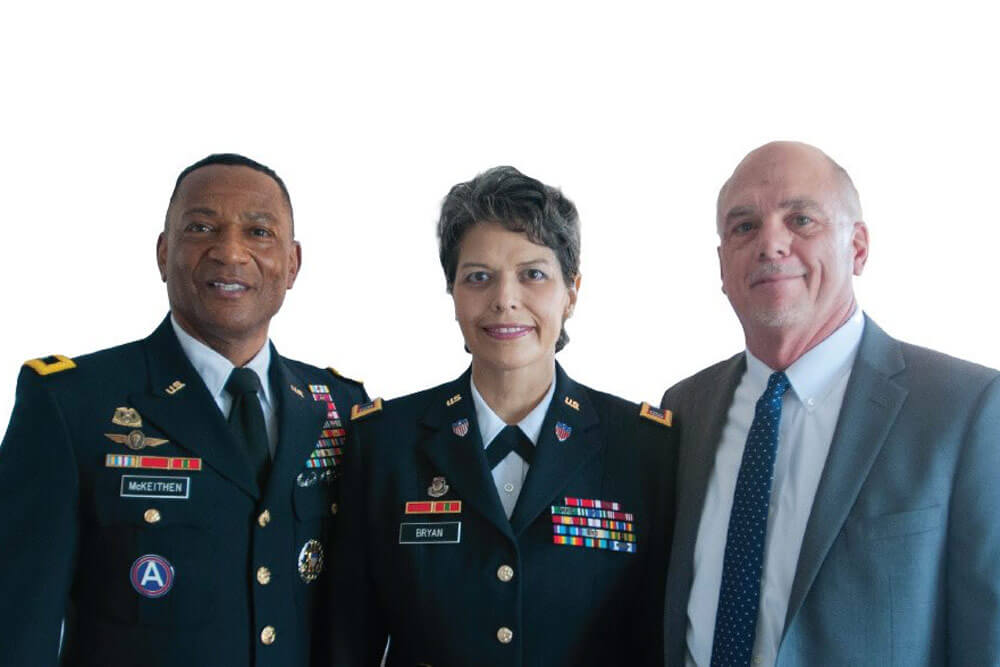Colorado Army National Guard Joins the Fight Against ISIS
“Shoot and Scoot” was the mindset for the Soldiers of the Colorado Army National Guard’s 169th Field Artillery Brigade (FAB) while they were deployed for nine months of fighting against ISIS in the Middle East.
The 169th provided Multiple Launch Rocket System (MLRS) fires for Operation Inherent Resolve from Dec. 13, 2016, until Sept. 11, 2017, under the command of U.S. Army Central Command (ARCENT) and the U.S. Army’s 29th Infantry Division. They were responsible for the full management of fires, as well as for airspace clearance for bilateral and multilateral exercises.
“It was complex,” said MAJ Jason Stuchlik of the 169th. “For Operation Inherent Resolve, we worked with nine countries as a Field Artillery Brigade.”
The 169th employed the High Mobility Artillery Rocket System (HIMARS) to support partnered maneuver elements in the region. HIMARS is a member of the MLRS family. It offers the firepower of MLRS, but on a wheeled chassis. HIMARS fires and then moves away at high speed before enemy forces are able to locate the launch site. According to its developer, Lockheed Martin, HIMARS is designed to engage and destroy artillery, air defense concentrations, trucks, light armored vehicles, armored personnel carriers, as well as support troop and supply concentrations.
“In the fight against ISIS, as an all-weather, always variable weapons system, it provided fast and responsive fires to the maneuver forces in Iraq and Syria,” explained COL Robert Davis, brigade commander of the 169th FAB.
Operation Inherent Resolve was established in 2014 by ARCENT. With a motto of “One Mission, Many Nations,” the campaign encompasses efforts and contributions from over 60 coalition partners throughout the Combined Joint Operations Area (CJOA) of Iraq and Syria.
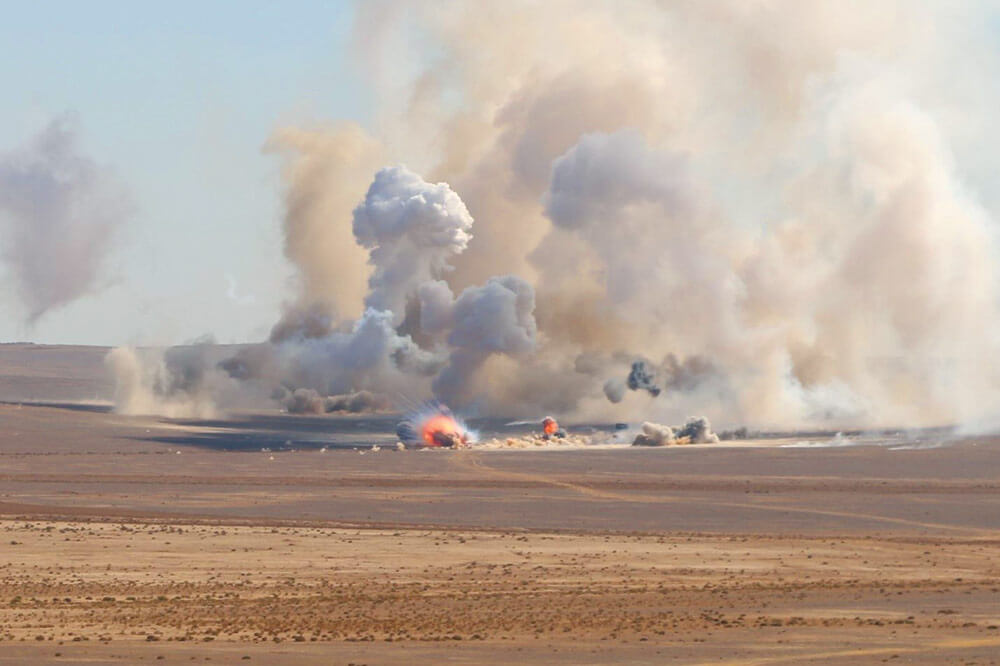
In connection with Operation Inherent Resolve, the 169th was also a part of Operation Spartan Shield – a subset of the larger campaign geared at building partner capacity in the Middle East to promote regional self-reliance and increased security.
“We were accruing readiness, building partner capacity and fighting ISIS,” said COL Davis. “The fight against ISIS has been the most consuming. We worked with nine different countries’ artilleries to accrue readiness across our forces at the artillery level. It’s what we trained to do our entire [military] careers.”
In order to establish efficient and effective mission processes, the 169th FAB focused much of its efforts on the digital integration of systems for the fire control element.
“Typically, the HIMARS firing points were in remote and somewhat isolated locations across the area of responsibility and required various satellite-based communications assets in order to support both fire control, as well as the Mission Command network,” said MAJ Dave Sonheim of the 169th.
It was MAJ Sonheim’s duty to help leverage all available means of communication to ensure reliability and redundancy of the links for both voice and digital communications. This was not a simple feat, as keeping the links continuously operational presented challenges.
“My biggest challenge centered on not only establishing these critical links, but working to keep them operational 24/7 in order to support the ongoing fire missions in Iraq and Syria,” MAJ Sonheim explained. “My brigade NetOps section quickly developed a communications [COMM] status map that provided real time status for each communications terminal across the brigade. This provided both the commander and the operations center with the most up-to-date COMM status at each firing point.”
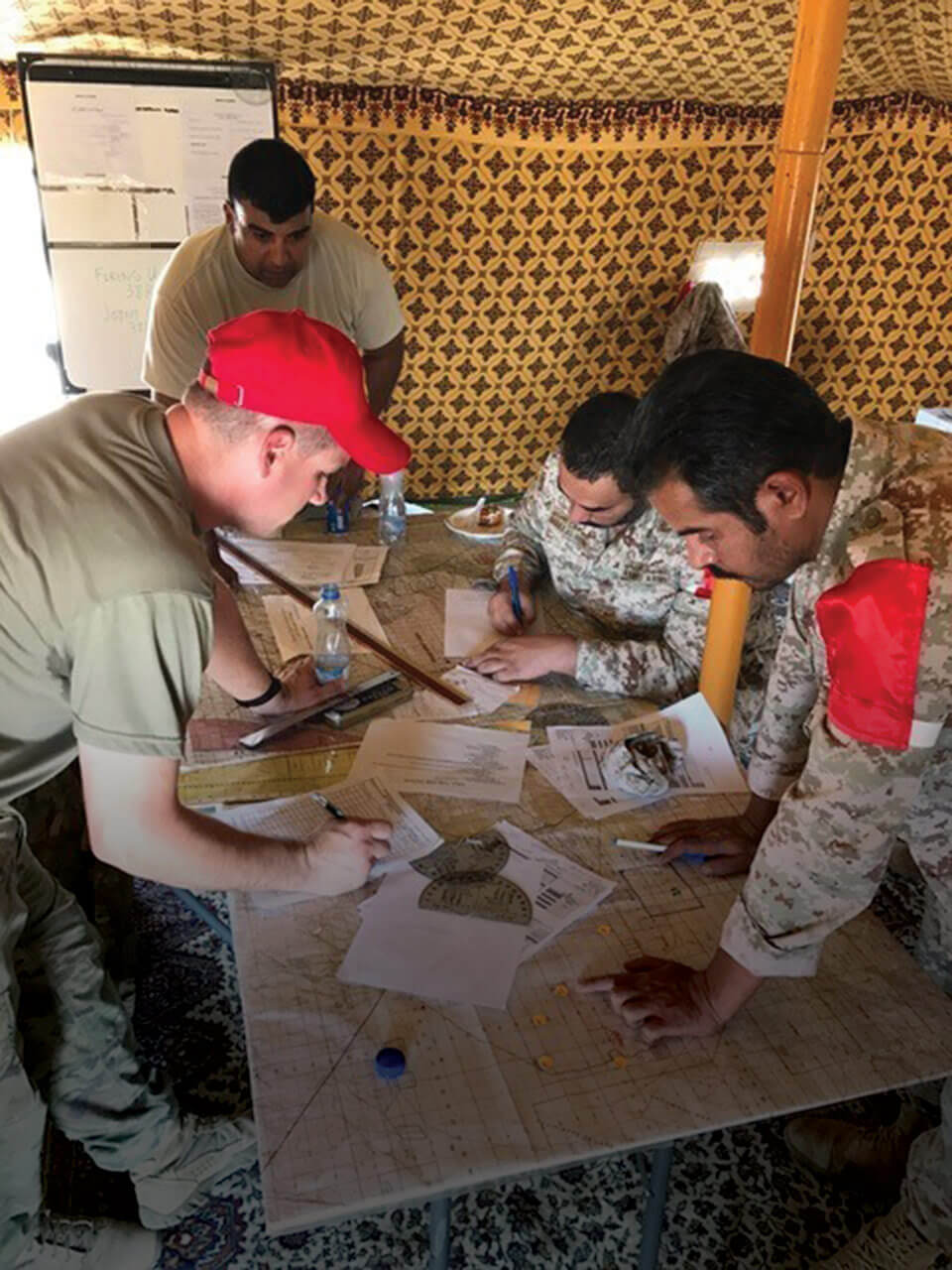
Thanks to the communications status map, communications links were kept stable. With reliable links, the 169th was able to leverage the network to pass digital fire missions from the brigade to battalions, then down to each of the firing points.
When campaigns to liberate Mosul and Raqqah from ISIS control were in the preparation phase, the brigade anticipated an increased demand for rapid and dynamic fire mission requests. Achieving full digital system integration of all Advanced Field Artillery Tactical Data System (AFATDS) fire control terminals became a top priority.
“Through a team effort across the brigade, we were able to establish redundant digital links for all of our AFATDS fire control terminals,” said MAJ Sonheim. “This seamless digital integration drastically improved our fire mission processing redundancy and enabled the brigade to deliver timely and accurate fires to support [combat operations] during the liberation of both Mosul and Raqqah.”
Soldiers of the 169th FAB integrated the HIMARS into multilateral exercises that included an exercise in the Hashemite Kingdom of Jordan, and an air and missile defense exercise with Kuwait and the United Arab Emirates.
As part of Operation Spartan Shield, Soldiers from the 169th participated in Operation Spartan Thunder, a bilateral military-to-military training exercise held at Kuwaiti Land Forces (KLF) Artillery Base, Jahra, Kuwait, that was geared toward strengthening interoperability and expanding joint capabilities. As part of the event, the Colorado Guard Soldiers worked with KLF counterparts to test the processes of their individual fire missions.
“It was a full multi-lateral rehearsal of the battle plan to deter Iranian aggression,” said LTC Seamus Doyle, deputy commander of the 169th. “We integrated the digital and field training exercise with the U.S., Kuwaiti and Emirates forces, and we simulated an engaging target up and down the Arabian Gulf. We were processing fire missions, conducting digital operations, communications operations and dry fire field training with the HIMARS in the field.”
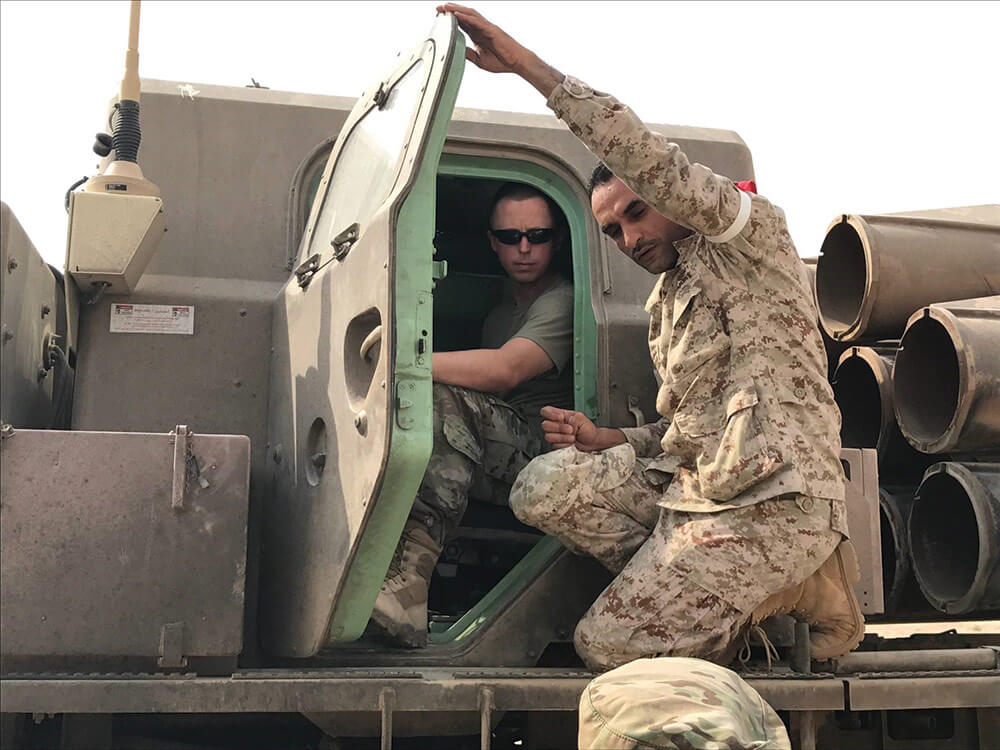
Operation Spartan Thunder helped to further strengthen interoperability between the United States and KLF forces. By using the HIMARS and the KLF’s Soviet Heavy Multiple Rocket Launcher systems, U.S. Forces successfully communicated targets to the KLF for fires missions, while the KLF successfully passed targets back to the United States to process.
When speaking about Operation Spartan Thunder, LTC Doyle noted, “We did our first iteration of rehearsing the battle plan. It’s probably the most important exercise because of the integration with the air and missile defense exercise where we were finally able to do the full battle plan with our Arab partners.”
He went on to explain, “These operations really serve a purpose to strengthen our partnership with the Arab military. We learn how to bridge the digital gaps, the communication gaps and the language gaps. We learn their techniques, tactics and procedures in order to bridge those [breaks that occur] naturally from being from different militaries. In terms of operational training, it was important to work alongside our Arab partners because they are a critical part of planning. It is important to learn how to work alongside them before we have to do it for real.”
While the 169th successfully completed their assignments during Operation Inherent Resolve, the mission did not come without challenges. Communication was an ongoing challenge throughout the brigade’s deployment in the Middle East.
“When you disperse your forces in such a decentralized manner [across multiple countries], it creates communications challenges. That was a day-to-day [struggle],” said COL Davis.
MAJ Herb Guerrero, brigade sustainment officer of the 169th FAB, agreed.
“We had so many locations throughout the area of responsibility. We had an array of forces, and it was challenging because you didn’t have just one unit in your immediate area – you had multiple countries so it had to be a team effort,” he said.
As MAJ Jason Stuchlik of the 169th reflected on the mission, he noted the coordination of airspace as one of the more complex tasks they had to tackle.
“The biggest lesson learned was the airspace approval process and the coordination with host nations,” MAJ Stuchlik said. “When firing in other countries, we had to really develop a good process for fires to happen in a timely manner. It was a very unique experience. It shows how important it is to work together and to help other countries deter threats, and support training in other countries so when we have to fight together, we are ready to protect our forces.”
According to MAJ Sonheim, key to the brigade’s overall successes was the leadership’s ability to very rapidly identify and utilize the strengths of individual team members.
“We collectively learned that you are only as strong as the team you are working with,” said MAJ Sonheim. “Generally, it takes a unit a while to learn how to leverage the collective intellectual energy of the team. But we were able to do this instinctively to quickly overcome obstacles and constraints. I was very fortunate to be surrounded by an outstanding team who worked every day to improve their positions.”
The work the 169th provided – digitally integrating firing systems and setting standards, processes and procedures for fire missions and air clearance – had a significant effect in the war against ISIS. The resulting benefits of their contributions have carried on to the other units who continue to battle in the fight.
“We made an impact,” said LTC Doyle. “In support of Operation Inherent Resolve, we were really instrumental in supporting our maneuver with fires. In Operation Spartan Shield, we made some improvements there. Where I think we made the biggest impact was doing operational field-type training with the Emirates and the Kuwaitis. We increased the amount of collective and combined training between ourselves and the Emirate artillery, and we advanced the training and operational integration with both the Emirates and the Kuwaitis.”
MAJ Sonheim added, “The U.S. role is significant and important. It demonstrates our willingness to work with regional partners to defeat terrorist threats and increase regional stability. Knowing that I was part of the U.S.-led coalition task force that helped rid the world of the Islamic State will be something that I will carry with me for [the] rest of my life.”
By Staff Writer Drew Lansbury
